




“Bloom Gardens Magazine is a unique regional gardening magazine advocating organic & sustainable practices.”
Unique gardening challenges we experience in Utah
Utah’s has a unique climate with extreme high/low temperatures, alkaline soil, and frequent drought. Considering it’s the second driest and fourth fastest growing state in the U.S. presents additional challenges of pollution, water shortages, and depleted soil.
Did you know that environmental illnesses could be prevented? Only 0.7% of farms are organic vs. traditional farms. Over 82,000 chemicals are allowed on the market without safety testing, and we use them in our daily lives.
I have seen firsthand the damaging effects this chemically filled world has on all of us. On September 24, 2013, my husband, Kevin was diagnosed with YoungOnset Parkinson’s disease (age 47), caused from his exposure to pesticides during his work career.
What’s the solution?
This is where Bloom Gardens journey begins. Our goal is to create an educational venue, which teaches how to garden & landscape without harmful pesticides, create sustainable gardens, and to help improve the environment within our communities.
Sustainable gardening combines organic gardening practices with resource conservation. Generally, sustainable gardening is forward-thinking, it values ecosystem support over aesthetics, makes as little negative impact on the earth as possible, and works with nature instead of against it.

Ramona Borkman Magazine Editor



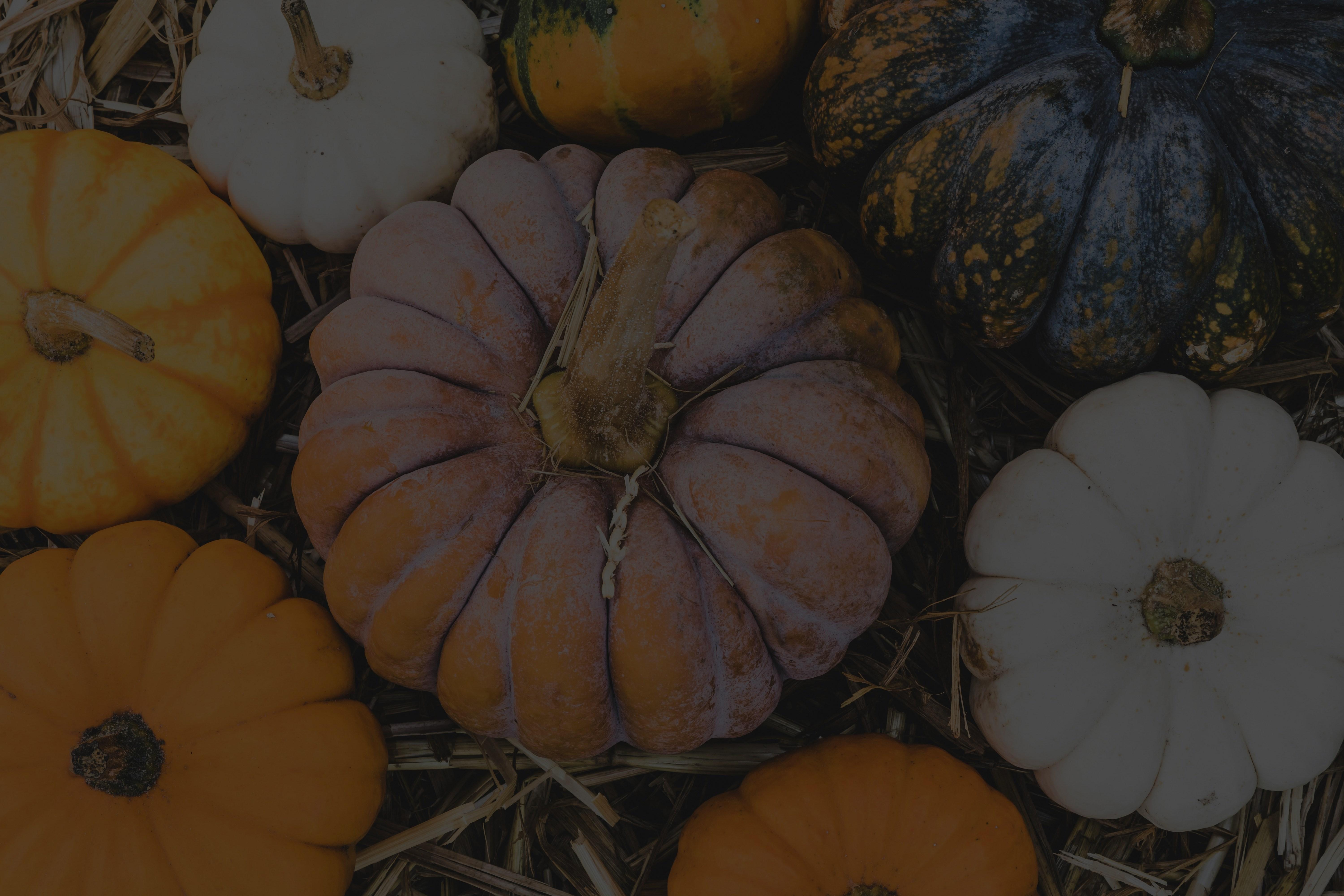

By Ramona Borkman, Magazine Editor
With more than 8 acres of exhibits, pathways and plants, Conservation Garden Park is Salt Lake County’ s premier destination for learning about Utah’s unique climate and the role each of us can play in protecting our water supply. During your visit take a walk through a water pipe, explore a full-scale Localscape, see thousands of Utahfriendly plants, and learn how create and maintain your own water-efficient landscape.
Jordan Valley Water Conservation District (JVWCD) recognized the need for waterwise landscaping across the Wasatch Front in the late 1990s and expanded to Conservation Garden Park in 2011. Conservation Garden Park not only features aesthetically pleasing and easily maintainable landscapes but also serves as an educational hub. The free classes offered at the Conservation Park teach how to be successful in our unique Utah climate and preserve our precious resources too.

While walking through the park, there are so many ideas to incorporate in our own gardens, especially because Utah’s climate is very different from many climates across the country. We have alkaline soil and water, extremely dry conditions, and large fluctuations between high and low temperatures.
Source: https://conservationgardenpark.org/














By Ann Kendall, Plant Select®

All too often, ornamental grasses have been used as problem solvers in home landscapes. They’ve been plopped into spots to hide ugly elements, like water meters or utility boxes. But ornamental grasses have so much more to offer to the overall design from texture, to movement, to seasonal color.
Horticulturist Jennifer Miller of Denver Botanic Gardens believes that ornamental grasses can elevate home landscapes. They can create a sense of lushness as they mature. They can add curb appeal deep into fall and winter. And they can welcome people home.
“Our houses are our sanctuaries,” Miller observes. “When I drive up to my house, I feel my body relaxing, saying ‘I’m home.’ I think grasses have the same effect on us. They have energy, but they’re also very calming in a landscape. They mimic the feeling of ocean waves in the wind. There’s something very meditative and relaxing about them.”

UNDAUNTED® Ruby muhly grass softens a park strip. Photo Credit: Ross Shrigley/Plant Select.
Miller designs and manages multiple gardens at Denver Botanic Gardens, including the Ornamental Grass Garden. She helps visitors discover the versatility of grasses in designs ranging from traditional English gardens, to meadows, to modern designs. Here are 10 of her tips to seamlessly integrate grasses into home landscapes.
#1: Think about your house color. Many popular house colors have muted tones: gray greens, tans, steel blues. You can find a variety of grasses in these colors too, creating cohesion between your landscape and home.
#2: Use grasses in scale to your garden beds and house. Typically, small- to medium-sized grasses work best if you don’t have an extensive yard.
#3: Plant grasses in groups for a bigger “ wow” factor. Use odd numbers of the same grass (sets of three, five, etc.) to create a dynamic and visually pleasing look.
#4: Repeat grasses across your landscape for visual continuity. Miller is fond of running blue-hued grasses through a garden like a river. She lays out her grasses in a meandering, stream-like pattern and then fills in around the stream with contrasting perennials and grasses.
#5: Keep it simple for a modern look. If you prefer a modern design, Miller suggests alternating plants in a checkerboard pattern. Contrasting colors and shapes can look especially attractive together.
#6: Include both cool season and warm season grasses, so you have continuous interest. Cool season grasses like blue oat grass and ornamental fescues leaf out and grow when temperatures are cooler. These beauties shine when paired with late-spring tulips, daffodils and native penstemons. Warm season grasses like little bluestem, blue grama and muhly grass leaf out and grow when it gets hot.
#7: Pair grasses with perennials of contrasting colors and shapes, but avoid overbearing plants that can steal the show. “You don’t want anything that will barge in and take over the grasses,” Miller advises. Some of Miller’ s favorite companion plants include Allium, Artemisia, gayfeather (Liatris), hyssop (Agastache), regal torchlily (Kniphofia), Salvia, Sedum and yarrow (Achillea). Miller also likes pairing grasses with “airy” perennials, such as LITTLE TRUDY® catmint and Wee One dwarf English lavender.

Grasses planted in groups can create a “ wow” factor. Photo credit: Jennifer Miller/ Denver Botanic Gardens.
#8: Manicure your grasses. If you prefer a tidier look, it’s okay to trim stray stems and broken inflorescences. Miller suggests giving grasses visible spacing too, so you can see the ground on either side. “The more manicured you keep your grasses,” explains Miller, “the more intentional they will look.”
#9: Understand that not every grass is low water. Some ornamental grasses are very drought tolerant. Others prefer moist soils. To find grasses that fit your conditions, search for grasses by irrigation level on Conservation Garden Park’s website, or check out low-water ornamental grasses from Utah State University Extension.

#10: Take photos of beautiful landscapes with ornamental grasses. Visit places like Red Butte Garden, Conservation Garden Park and Denver Botanic Gardens for inspiration. Miller advises that you don’t have to use the exact plants you see. You can choose plants with a similar appearance. For example, if you’re committed to native plants, you could seek out natives that have a similar look and share comparable growing conditions.
“There’s so much versatility in ornamental grasses,” shares Miller. “They work in so many styles from the modern to the meadow. The only limitation is your imagination.”

Miller uses a checkerboard pattern of contrasting plants to achieve a more modern look. Photo credit: Jennifer Miller/Denver Botanic Gardens.



By Progressive Plants
People often ask us, “When is the best time to plant?” It’s a great question with a threepart answer. We’ll touch on all three answers in this article.

Part One: Plant when plants are available.
Truthfully, plants can be planted almost any time of year, as long as the ground isn’t too frozen for digging. Often, the best time to plant something is whenever you can find it. You certainly can’t plant something you can’t buy. Typically, garden centers prefer to sell plants when they’re at their peak, so there are many plants that won’t be in stock until later in the season. It always pays to check your favorite garden center many times throughout the season to see what’s new. When you find that amazing plant, no matter the season, it’s best to get it planted as soon as possible. Plants are always happier in the ground than they are in a pot. Be sure to watch your new plants closely after they’re in the ground, especially during the first few weeks. Watch for signs of stress and water them accordingly. That said, there truly is a best time for planting your trees, shrubs, grasses, and perennial plants.
The most common time for planting in Utah is in the spring, when our world emerges from the cold of winter. As the snow starts to melt, garden centers bring in plants from out of state to capitalize on the demand, and we eagerly rush to find the perfect specimen for our yards. It’s therapeutic gardening. After sitting cooped up in our houses for months, most of us literally need to get outside in the sunlight and drive our hands into the dirt! It makes sense to plant new plants that will grow alongside the new sprouts of spring, but is it the best time to plant? Not technically.
It’s impossible to plant early enough in the spring to take advantage of the most important growth opportunities for plants. By the time we wait for the snow to melt and the ground to dry out enough for digging, we’ve missed it. After sitting dormant beneath the snow in frozen ground all winter, plants are eager to awake in the spring. In fact, at the earliest sign that winter is giving way to spring, plants experience a spurt of root growth. To our eye, nothing has changed. The plant still appears to be dormant, but beneath the melting snow and soil, the plant is already waking up and preparing for a burst of growth by sending out new feeder roots.


By the time we start planting in April and May, that burst of root growth has already slowed down significantly. So we rush to the garden centers and enthusiastically plant beautiful little plants in our landscapes just a few short weeks before the hottest season of the year. That heat creates a huge demand on young plants as they try to draw up enough water with their unestablished root systems.
When we see that our plants are struggling, we give them extra water. Normally that’s fine, but we need to be careful not to give them more water than their roots can absorb, because when roots sit in standing water for too long they can rot. Rotted roots are unable to draw up water, so the plant dies. The symptoms of too much water look very much like the symptoms of inadequate water, so it’s easy to misdiagnose a plant and give it even more water, when what it really needs is time for the soil to dry. It’s a crazy balance!
Spring is a decent time to plant, but ideally, we would mimic nature. Mother Nature plants almost everything in the fall, starting right about now. For trees, shrubs, grasses, and perennials, August through November are the ideal months for planting.

The plants in your vegetable garden are annuals, so we need to wait until April and May for those, but everything else will benefit from being planted now, in late summer and fall.
Temperatures begin to drop around the middle of August, so today is an ideal time to start planting. Although the outside temperatures will drop from now through November, the temperature of your soil will remain warm enough for roots to grow. These are ideal conditions for establishing new plantings. They aren't actively growing at this time of year, they're settling in. Your plants won’t struggle against the heat, and their roots will begin to grow in their new location because the ground is still warm.
In fact, 80% of a plant's root growth occurs in the late summer and fall months. While you won't see as much stem and leaf growth in the fall, the plants are busy growing new roots. With the arrival of spring, fall-planted perennials are ready to burst forth with vigorous new growth and a profusion of flowers.
Growers take advantage of this concept all the time. We have heated floors in some of our greenhouses to encourage new plantings to grow roots during the winter months.
As plants settle in for the upcoming winter, they draw nutrients from their leaves and store that energy in their roots. This strengthens roots and promotes root growth in the fall. Then, in the very early spring, plants have one more essential growth spurt with a burst of new feeder roots just prior to sprouting leaves and flowers. Plants that are established in the fall will have a huge advantage over anything you’ll plant next spring because your plants will have had fall and winter to get established in their new surroundings. Healthy root stock will allow your trees, shrubs, and perennials to better weather the heat of summer with far less shock.
Another critical element to a thriving, healthy landscape is to water well in the fall and winter months. That may sound weird. After all, we typically receive quite a bit of rain and snow during the colder months. But it’s all about establishing healthy root systems for your plants. We have an entire blog dedicated to the subject on our Progressive Plants website (https://www.progressiveplants.com/ blog.html). Feel free to read it for more information about when and how to water in the cold.
So, if you want your yard to wake up quickly in the spring and grow vigorously from the very beginning, be sure to plant now. Fall planting and watering during the cold season are the two biggest secrets to a healthy, hearty, spring landscape that can withstand the stress of summer. If you have questions, call or chat with us any time. We’ re open yearround and are excited to share our knowledge with you.

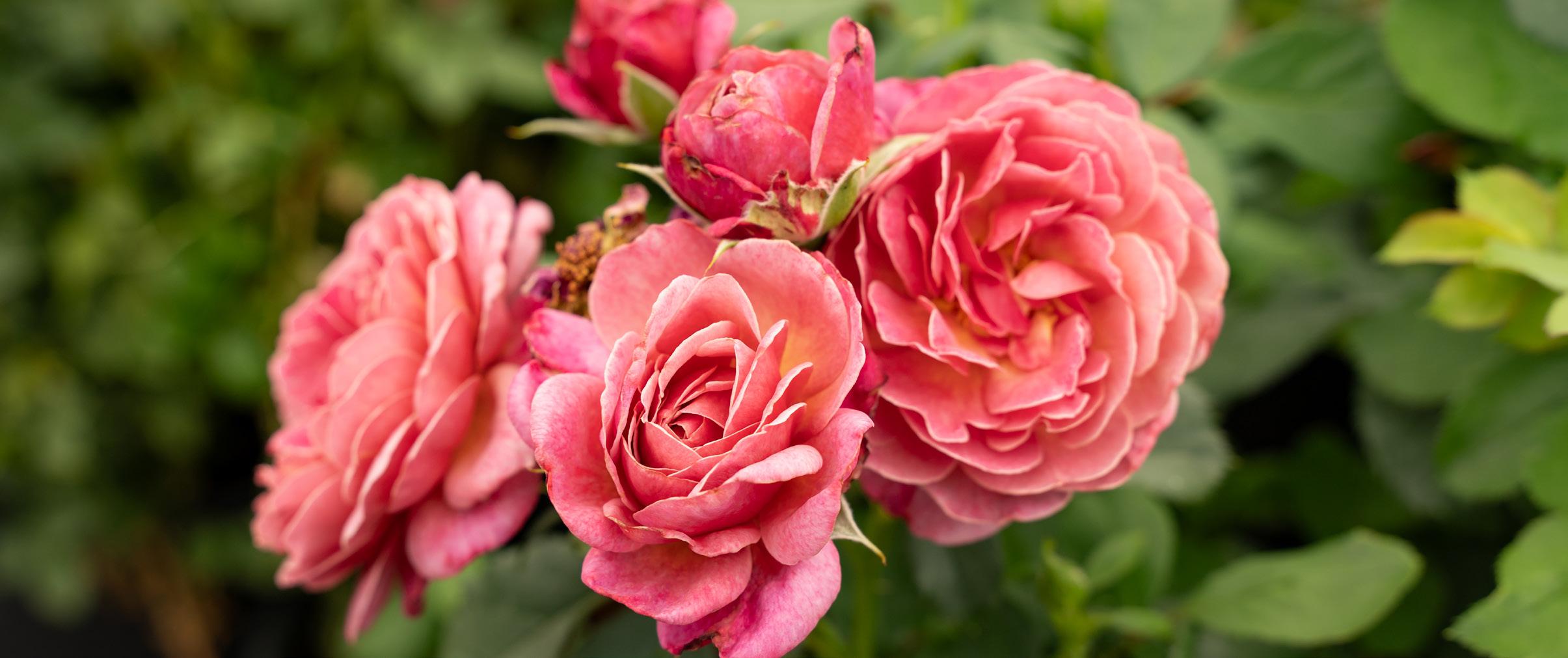
In the Intermountain West, we deal with wild weather fluctuations, difficult soil conditions, and irrigation water that is often less than ideal. (Water from Utah Lake can actually kill many of your favorite plants.) But you can still create an idyllic outdoor escape!
We’re Utah’s largest production nursery with more than 100 acres devoted to trees shrubs and perennials that thrive here. We’ve been growing plants in the Salt Lake Valley for decades, so we know what will grow in your backyard.
At Progressive Plants.com You Can:
• Browse our online catalog by category: waterwise, deer resistant, ornamentals, etc.
• Use our New Garden Planner Tool to select the perfect plant for your space and conditions
• Create a wait list so we can notify you when plants are ready
• Order plants online for easy pick up or delivery
• Chat directly with a horticulturalist
• Schedule a FREE golf cart tour to explore the farm and be inspired.
• Contact amazing landscape designers
• Sign up for our newsletter
• And more. Check it out today!
Progressive Plants
10252 South Bacchus Hwy Copperton, UT 84006 801.565.7333


By Nick Volesky, USU Extension

The earth is home to over one million different species of insects, with new species being discovered every year. Of these, less than one percent are considered pests to horticultural crops and landscape plants. Being able to identify different insects, their food preferences, roles in the ecosystem, and life cycles is an important skill for gardeners. Often, we focus on species that negatively impact our plants, but we forget to appreciate those with positive effects, such as through pollination, decomposition, or predation of harmful insects. Insects also play a vital role in the larger food web, providing a food source for vertebrates such as birds, mammals, and reptiles.
Familiarity with insect identification can benefit our management decisions, allowing us to manage specific species in ways that are cost-efficient and have minimal impact on the surrounding environment.
Like all living things, insects can be classified very broadly into large taxonomic groups down to specific species. This classification starts with the highest classification, the animal kingdom, followed by the phylum Arthropoda, which includes other arthropods like spiders, mites, and centipedes in addition to insects. The next taxonomic levels are class and order, which group insects that share common traits. Academics generally recognize 26-30 different orders of insects, with common ones including Lepidoptera (moths and butterflies), Coleoptera (beetles), Diptera (flies), Hemiptera (aphids, stink bugs, etc.), and Orthoptera (grasshoppers and crickets). The next taxonomic levels are families and genera. Within these groups, specific species of insects are categorized structurally or phylogenetically. For example, two types of grasshoppers are their own specific species but can be closely related enough to be within the same genus and family.
When looking for insects in the landscape, it is important to regularly check all parts of the plant from the seedling stage to maturity. This includes the foliage, flowers, fruit, stems, crown, and roots. When specifically looking for pest insects, you should watch for signs and symptoms. Signs are physical evidence of a pest, such as excrement (frass), shed skin, or the presence of the insect itself. Symptoms are the plant's reactions to a pest, which can include feeding damage, discoloration, wilting, or lesions. Helpful tools for gardeners include a beating sheet or tray, over which foliage can be shaken to catch any fallen insects for easier identification. A hand lens or magnifying glass can be used to see smaller insects more clearly.
For home gardeners new to insect identification, there are several resources available.

Sharing a photo on social media groups like The Utah Society of Entomology can pool identification suggestions and insights from other local naturalists. The Utah Plant Pest Diagnostic Lab accepts photos texted to 385-367-3773 and can provide free identification from USU Extension insect diagnosticians. Guidebooks like Vegetable Pests of Utah and Beneficial Insects of Utah provide references to several common species found within Utah, with photos and descriptions.



By Skylar Christensen, co-owner Cache Valley Native Plants

Why did you start gardening? Was it to grow and harvest your own food? Was it to beautify and add value to your landscape? Perhaps you were looking for a healthy hobby, or it was something you did as a family growing up and wanted to continue the tradition. Maybe it helps you connect with nature on a deeper level. These are all valid and noble reasons why we do what we do year after year.
But what if there was another reason for gardening – a reason that has little to do with the actual gardener and their own needs and desires. A reason bigger than us all, yet one we can all do something about. What if we gardened for the bugs? What if we gardened for the birds? What if, simply by selecting native plants over introduced plants, we could help stave off ecosystem collapse and mass extinction? What if our biggest reason for gardening was to literally save the world?
First, we’re going to leave gardening for food out of this discussion. Utilizing your landscape to feed yourself, your family, and your community is the epitome of sustainability. Instead, we’re going to focus on gardening for aesthetics, or ornamental horticulture.
The problem began as soon as the first ships arrived in the New World. As settlers spread across North America, they also brought with them their ornamental plants from across the ocean. They brought their love of large nonnative turfgrass lawns. They also, inadvertently, brought plants that have become noxious weeds throughout the country. And the problem continues to this day. We still plant exotic ornamental species from different continents, we still have a love affair with large lawns, and we still spread noxious weeds throughout the country.
So, what’s the problem with non-natives? Many can be considered water-wise and low maintenance. Isn’t that the goal for our Utah landscapes? While many non-natives are quite adapted to our climate and contribute to a water-wise landscape, the problem lies with the pollinators, insects, and other wildlife nonnatives support – or don’t support. Dr. Doug Tallamy, a leading voice in the native plant movement, lays out evidence in his book “Bringing Nature Home” that insects can’t utilize alien plants the same way they can with the native plants they evolved with, mostly due to leaf chemistry. And since these insect-plant relationships took millions of years to develop, they can’t adapt quickly enough to our mostly non-native landscapes.
As a result, insects are disappearing as their food sources disappear. When the insects disappear, the birds and other small animals disappear. And when they disappear, well, we all learned about the food chain in school. We are in the midst of an ecological disaster playing out in front of us.

With over 80% of U.S. land privately owned, the solution depends on all of us. Whether you measure your property by the square foot or by the acre, replacing non-native plants with plants native to your state, or better yet, your county, is the best way to help prevent mass species die-off. I don’t want my children to inherit a world devoid of the plant and wildlife that myself and my ancestors enjoyed, let alone a world where the loss of these species threatens our own human existence.
Does this mean you need to cut down the Norway maple that shades your back patio in the hot summer months, remove the entire lawn your kids and pets play on, or uproot your heirloom roses passed down from your great-grandma? Of course not! The National Wildlife Federation’s recommendation of a 70% native landscape is a great goal. If you’re willing and able to go 100% native, even better!
Doug Tallamy says it best, “In the past, we have asked one thing of our gardens: that they be pretty. Now they have to support life, sequester carbon, feed pollinators and manage water.” It’s my hope we can add one more reason to why we garden.
Interested in creating a beautiful and sustainable, living landscape? Reach out to us at Cache Valley Native Plants for plant recommendations and design considerations for your landscape needs. Let’s level up our landscapes together!



By Cathy King, Utah Native Plant Society

Most of the purple color in Salvia pachyphylla is found in the colorful bracts. The flowers themselves are a lighter shade and small by comparison.
In native and dryland gardens, the middle to late summer garden presents challenges to find native plants that will dependably bloom in the heat. Enter Salvia pachyphylla, from the family Lamiaceae, commonly known as the Mojave sage, a highly aromatic and handsome small woody shrub with flowers that range from a light lavender to a deep purple that start to appear in July and continue until frost. And the bees love it.
Technically not a Utah native plant, it was first introduced into Washington County, Utah as a landscape plant and now, as the climate continues to warm, it has migrated into our northern gardens as well. It is a native of California, but some sources claim it is also native to Nevada and Arizona, however Dr. Stanley Welsh in A Utah Flora states it was “introduced into several states from California, where native.”

It is very difficult to restrict the selections for a native plant garden to choices only from Utah, so I am allowing myself license to extend those selections to native plants from the Intermountain West. After all, the mission statement of the Utah Native Plant Society is: The Utah Native Plant Society is dedicated to the appreciation, preservation, conservation and responsible use of the native plant and plant communities found in the state of Utah and the Intermountain West.

And the Mojave sage is a superb plant that would be a wonderful addition to your dryland garden. It doesn’t need a lot of water, once it is established. It is important to emphasize the “once it is established” because it is vital to water a new plant regularly until it has the chance to grow roots far enough into the ground to find water sources on its own. But once established, this plant will continue to increase in size every year and flower even more profusely. The warmest time of the day brings out the musky minty fragrance of the plant, if you brush your hand through its leaves, it will come away with a slightly sticky feeling and a potent film of its scent.
The Mojave sage is a good candidate to grow on the dry park strip with other low water plants and combines nicely with Artemisia versicolor ‘Seafoam,’ a Plant Select choice introduced by Lauren Springer Ogden, the well-known western horticulturist and author of numerous gardening books including The Undaunted Garden. This “curlicue sage” covers the ground quickly and wends its way around plants creating a soft backdrop to the silvery leaves of the Mojave sage. It also smells good and requires very little water. It can be a vigorous grower and might require annual trimming to keep it under control, but it isn’t unmanageable and is highly recommended.

Both Mojave sage and curlicue sage* should be available at local nurseries and online. It is best to plan now to get them ordered before they sell out so you can plant them early in the spring and get them well established in your garden while the conditions are the most amenable.
*This is an example why common names are less useful than scientific names. The name ‘ sage’ is used here for unrelated species: Salvia pachyphylla and Artemisia versicolor.

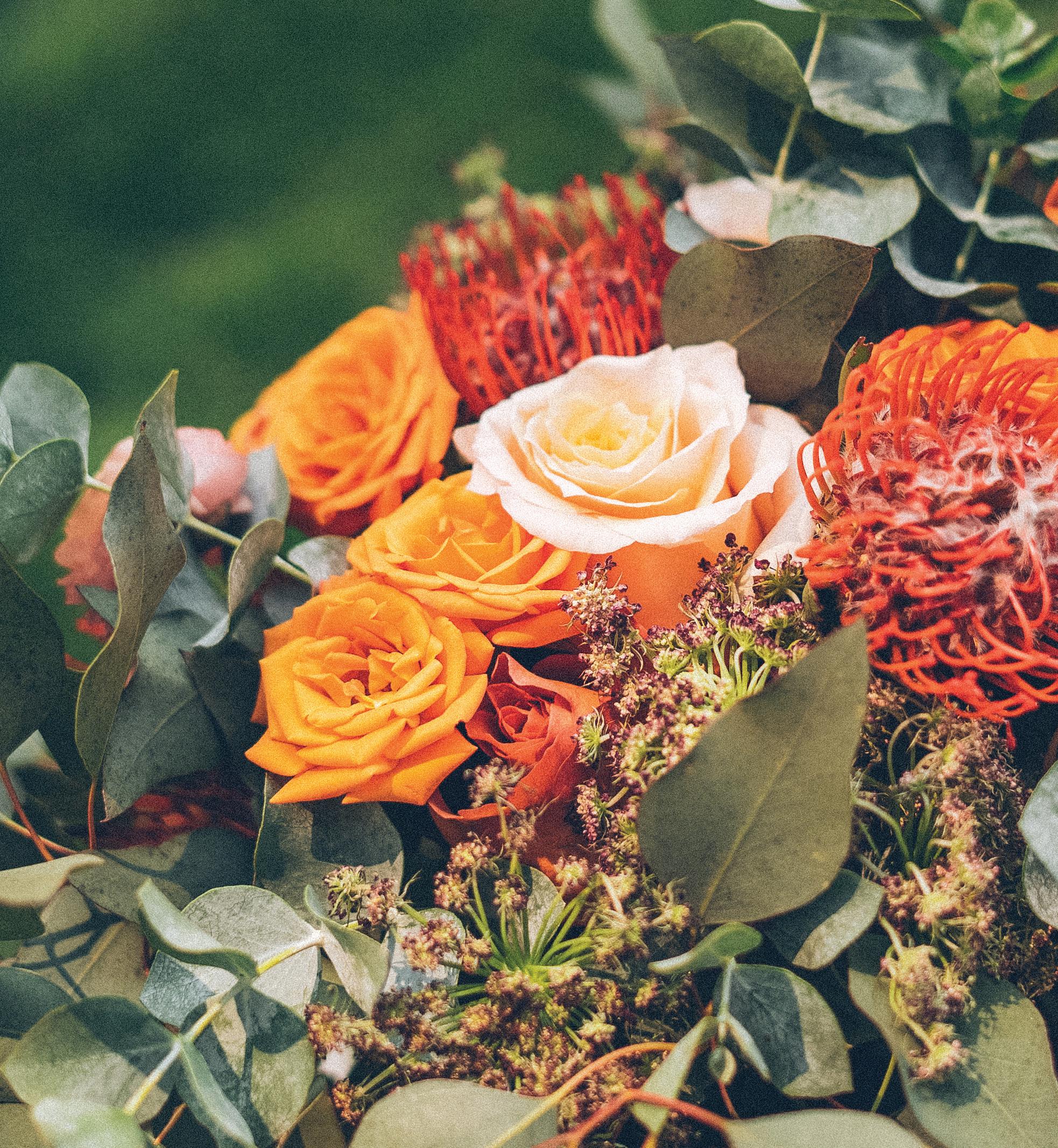
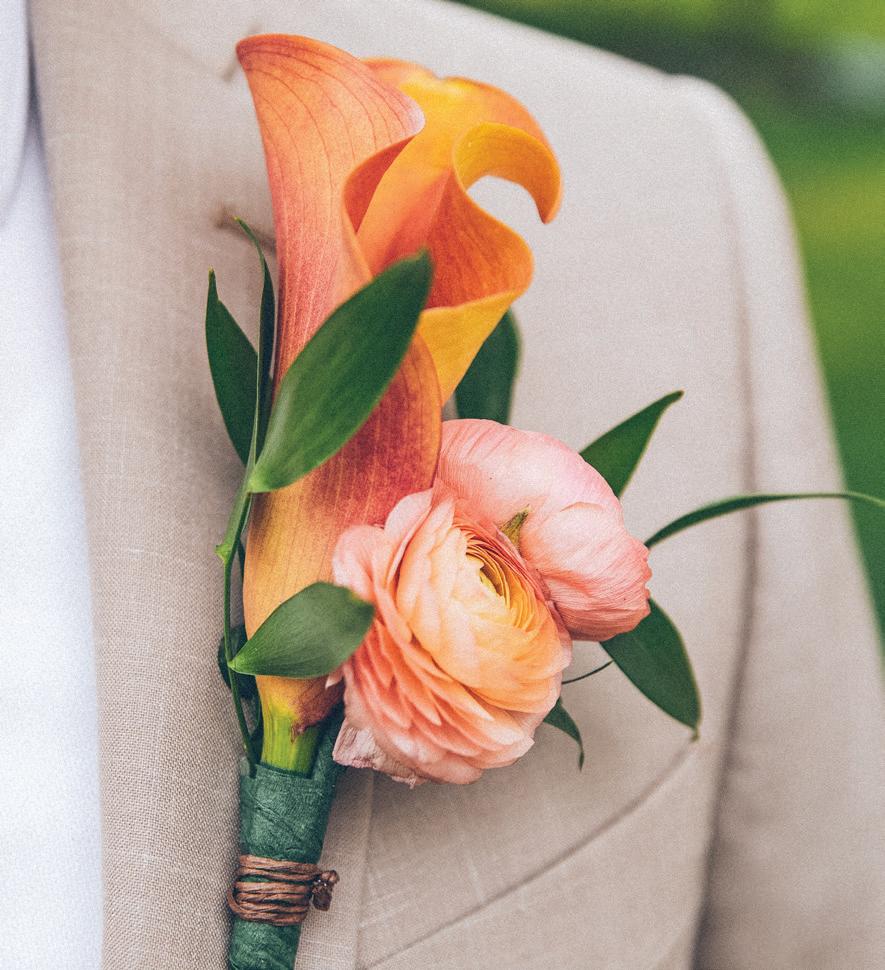
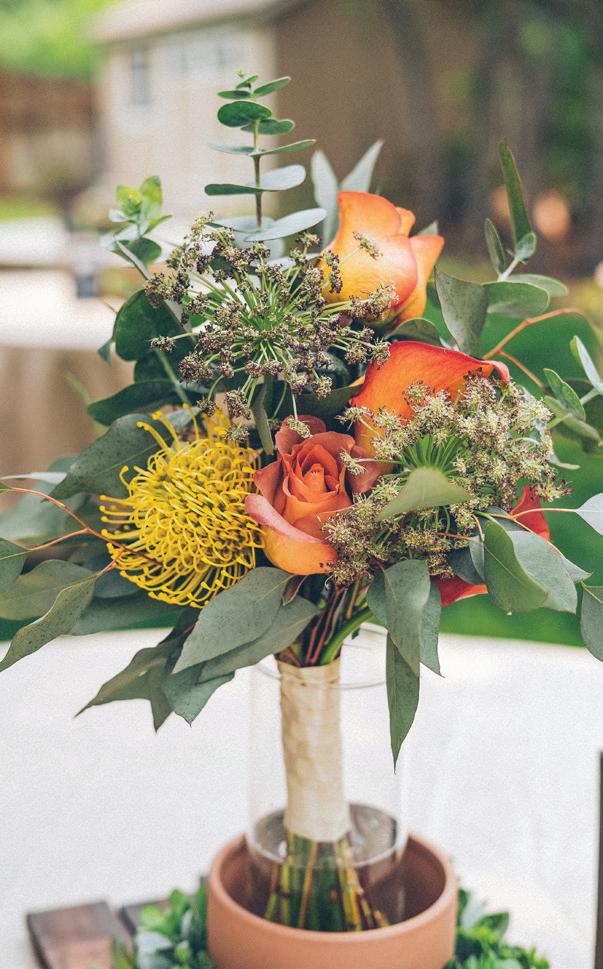


By Geoff Ellis, Utah Associated Garden Clubs
Recently I had the opportunity to travel to England to attend the Chelsea Flower Show, the world’s premier horticultural exhibition. The displays, some of them installed at a cost of more than $100,000 each, were truly impressive and well worth seeing, although the crowds were an experience that I’m not eager to repeat. We also visited some of the most famous gardens in the southern and central parts of the country. England is renowned for its gardening tradition, and the places we saw did not disappoint.

At one end of the spectrum was Blenheim Palace, the birthplace of Winston Churchill. It represents landscape design on the grandest of scales, where an entire lake was created out of farm fields, and hundreds of acres were converted into a rolling, pastoral landscape just to provide a suitable setting for a Baroque palace of gigantic proportions. Formal gardens, vast meadows, lush forests, and miles of tree-lined promenades were planted to emphasize the importance of the estate.


At the other end of the spectrum was Barnsley House, with a relatively modest garden of four acres. It is a horticultural gem by the 20th-century author and gardener Rosemary Verey. She began as an amateur knowing very little about garden design but soon demonstrated an instinctive talent that not only brought admirers but also commissions to design gardens for King Charles and Elton John. She combined garden styles in a thoughtful way that creates a harmonious setting rather than a clashing hodge-podge, and she popularized the idea of making herb gardens and even vegetable gardens into something ornamental rather than hiding them away.
Sissinghurst Garden offered insights not only into garden design but also the darker side of history and the brighter side of human relationships. Originally a grand Elizabethan castle, it was later used as a prisoner-of-war camp. By the time the writer Vita Sackville-West and her husband Harold Nicholson bought it in 1930, it was in ruins and the courtyards were full of rubbish. Yet they saw its potential and went to work creating something more beautiful and unique than they could ever have created in a more convenient empty field. He provided a firm, orderly, architectural vision for the garden, while she filled it with exuberant masses of flowers, shrubs, and vines, giving life and richness to the design. Dark green hedges and ancient brick walls divide the garden into outdoor rooms, each with a distinctive theme, such as the White Garden, the Purple Border, the Rose Garden, and the Cottage Garden. Creating Sissinghurst was a shared passion for this odd couple (you can find out more about them in the book “Portrait of a Marriage” or the television series of the same name), reflecting their unconventional yet loving marriage. We also visited Hidcote, a beautiful estate that provided the original inspiration for outdoor garden “ rooms,” and Hever Castle, the ancestral home of Anne Boleyn. Both of these places have a U.S. connection, as it was wealthy Americans who restored them in the early 20th century and brought them to their present glory. Our tour was rounded out by Kiftsgate, Kew Gardens, Wisley Garden, Batsford Arboretum, and King Charles’ Royal Gardens at Highgrove, where we were not allowed to take photos because of security reasons. All of these places were well worth seeing, and we drooled over the lupines, foxgloves, clematis, and other flowers growing to a perfection we can only dream of in the desert.



In Utah we are not blessed with the abundant rainfall and mild climate of England, nor do we have romantic ruins and castles with hundreds of years of history. Therefore it would be difficult to create truly authentic English gardens here. Nevertheless, there is much to learn from them, such as a sense of form and color, a responsiveness to the constraints and opportunities of a site, a love of plants both for their own sake and what they can contribute to a design, and a willingness to let garden plants thrive and look their best in the locations that best suit them. What an amazing experience it was to board a plane in SLC and arrive several hours later in a foreign country! I highly recommend traveling to see gardens in other parts of the country and other parts of the world, if you can. You will come back with fresh ideas and a new perspective on gardening in Utah.






By Amanda Hammond, Harmons Floral Production Manager and Certified Florist

Fall is the perfect time to refresh your home with the latest floral trends, and the designers at Harmons Flower Shop have everything you need to make your home cozy and stylish this autumn. Amanda Hammond, Harmons Floral Production Manager and Certified Florist, answered frequently asked questions about trends and caretaking tips.
Q. What are the most popular flowers for fall arrangements?
A. Depending on the color a flower grows, any type of flower can be considered "fall." Seasonality doesn't always affect flower availability as many of Harmons’ growers are located in Ecuador. The most commonly used in fall style arrangements, however, are the orange and two-toned roses, sunflowers, lilies, snapdragons, and pumpkin tree. Items like wheat, grasses, strawflower, marigolds, and Safari Sunset have great texture. If you are going for fragrance, lilies, roses, and carnations offer a nice floral aroma. Outdoor potted mums are also always a big hit.
Q. What are the current trends for fall floral arrangements?
A. We are seeing the rise in popularity of dried and preserved flowers and bleached preserved foliage. The color palette seems to be lighter oranges and peaches, not as many deep reds, oranges, and yellows. I plan to use pinks and rose golds in a few of our Harmons fall arrangements.

Floral arrangement trends are a wild look with lots of texture. People want a freshly picked and earthy look, nothing with much shape or form. There is a rise in the retro look as well with brighter colors and funky containers that aren’t really full, just a few statement flowers.
Q. Do you have any tips for creating a fall floral arrangement at home?

A. Use flowers that have different lifespans. Some are hearty and longerlasting, and some keep their bloomed look for their full lifespan. For example, carnations and mums are a longer-lasting flower, so mixing those with something like a lily or roses that don’t necessarily stay bloomed as long will create a continually changing arrangement. Our floral designers can offer other helpful tips as you shop at any Harmons location.
Q. Are there any unusual or exotic flowers that you recommend?
A. Protea, a tropical flower with distinctive spiky texture , is a great eyecatching focal. Dahlias, even as a more delicate flower, make a great statement. Mini calla lilies come in some really deep rich colors, and create a cleaner look as they are more coned and curled rather than a super ruffled petaling flower. Anthuriums are beautiful in deep reds and greens, and they come in purples as well. Amaranthus hanging or upright is a great greenery for a fall floral piece. Parrot tulips with a ruffled petal are great for texture. Safflower is a longlasting addition. Fillers in deep purples like veronica, statice, and the tinted and dried floral have gotten really popular as well. Crespedia is fun for a pop of character.
Q. What are some care tips for fall flowers to keep them fresh and prolong their life once they are in the home?
A. The best rule of thumb I can suggest is a fresh cut daily and new water. As a cut on our skin heals, so does the stem on a flower. This is why they need to be recut to open that area back up enabling the flower to continue drinking.
Additionally, a floral piece made in a vase tends to last longer than a piece made in a solid container as the person can see the water level and is reminded to refresh and recut the flowers. Keeping the flowers in a cooler place when possible is key, not near a heater vent or computer.
Q. Will there be any special fall arrangements available for purchase at Harmons Flower Shop?
A. We will be offering really fun fall arrangements for every flower enthusiast, some with a fun and playful vibe and others more traditional. We have squashed pumpkin containers, skull themed arrangements, and Halloween tinted rose arrangements.
If you’re not a flower person, Harmons also offers potted succulents year-round to bring some color and interest to your space.
Q. What individual fall flowers are available to purchase so customers can make their own arrangements at home?

A. We have a program with individual flower types grouped together for DIY projects. Mixed greenery bouquets, sunflowers, hydrangea, mums of all kinds, dried lavender for fragrance, roses– this list goes on and on. Our designers are happy to help you pick out any flowers for your custom arrangement.

By Gabriela Murza , USU Extension

Whether you’re a weekend gardener or you spend time in the dirt daily, you have probably experienced working too hard and feeling sore. Soreness can stem from exerting a new or weak muscle, and it generally subsides after a few days. But pain that lingers can occur from overworking or doing a task incorrectly. These types of injuries can be considered “traumatic,” such as a rotator cuff injury, or they can be a “repetitive strain injury,” which occurs in muscles, tendons, and nerves from repetitive movement or overuse, mainly seen in the hands, wrists, shoulders, elbows, knees, and lower back.
Consider these tips to prevent injuries and minimize pain while working in the yard and garden.
Treat gardening like exercise. Warm up, stretch to loosen sore muscles and joints, and cool down. A warmup can be dynamic stretching, jogging, etc., but it can also include walking around the garden, which has the added benefit of you seeing areas that need work and determining which tools you’ll need.
Drink water before, during, and after gardening. Sports drinks are not necessary unless you’re working for more than 1 hour and sweating or doing strenuous work.
Wear comfortable, breathable clothing with long sleeves, tall socks if possible, and closed-toed shoes with ankle support, such as hiking shoes or sneakers.
Wear sunscreen and a hat, even if it’s cloudy. Wear sunglasses for eye protection. Look for broad-spectrum sunblock with an SPF30 or higher, and follow the reapplication instructions on the label to get the best benefit.
Also consider mosquito repellant if needed, but avoid sunblock/repellant combinations because sunscreen should be reapplied more often than repellant.
Use ergonomic tools and equipment to make tasks easier. Ergonomic attachments, such as handles, can be purchased to retrofit existing tools.
Switch it up. If you’re doing a task that favors one side, such as raking or shoveling, switch to the other side every few minutes. If your task includes kneeling, have your next task focus on standing. Change tasks every 20-30 minutes to alternate the muscles used, and stretch as needed.
Take a break every 5-10 minutes when trimming tree branches and performing other overhead tasks that require looking up or having your arms at or above your shoulders. If necessary, use a ladder so your body is in line with the task.
When working low to the ground, kneel rather than crouching or squatting, and use a foam mat or knee pads. Kneel on one knee while keeping the other foot flat on the ground for support. This helps avoid hunching and keeps your back straight. Alternate legs every few minutes.
Use the proper techniques and posture to avoid injuries and strains to your neck, shoulders, knees, wrists, ankles, and back. Consider these three techniques:
1. Squat This exercise is used for picking up and putting down items. It engages the quads, hamstrings, hips, glutes, and abdominals and helps avoid strain to the back, knees, ankles, neck, and shoulders.
2. Pivot technique This technique allows you to change directions without twisting. It works well for shoveling and dumping dirt or moving bags and other materials from one side to another. It also helps avoid strain to the back, knees, and ankles.
3. Back-and-forth weight transfer This technique is used to move items back and forth with a long-handled tool, such as a rake. This helps avoid hunching over, pulling, and twisting and uses larger leg muscles that prevent straining the back, shoulders, and arms. Video link of the three techniques, click here.

Localscapes was developed by a team of horticulturists, landscape designers, maintenance pros, irrigation experts and members of the water industry. The goal was simple: create a landscaping approach that takes all the complex and confusing science behind landscape design and simplify it to create landscapes that thrive in Utah. The result was five basic pattern pieces that are easy to understand and apply.



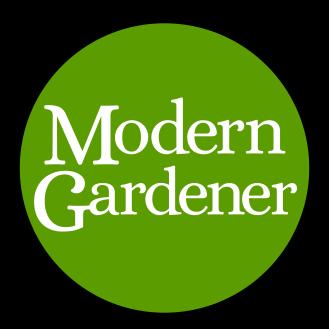
PBS Utah's Modern Gardener is a YouTube channel that celebrates and supports the people, organizations, and communities committed to educating and enlightening Utahns about gardening and landscaping in our unique region.
Modern Gardener host, Cynthia Stringham, brings years of gardening experience to the show. As a master gardener and gardening social influencer, she loves sharing gardening tips and information and learning how others garden. She values the garden journey and understands the diversity in gardening techniques. Join us on Modern Gardener YouTube Channel, Instagram, and Facebook to find inspiration and learn more about gardening in Utah.

The Utah Associated Garden Clubs, Inc. are part of the National Garden Clubs, Inc., sharing its mission to provide education, resources, and networking opportunities for our members, and to promote the love of gardening, floral design, and civic and environmental responsibility. We currently have 10 member clubs in the state of Utah, with 285 individual members.

is the largest production nursery in Utah, providing plant material for professional landscapers, developers, and homeowners throughout the Intermountain West. Each year they grow hundreds of thousands of trees, shrubs, and perennials right here in the Salt Lake Valley, and have loads of plants available for purchase year-round. They are also wellconnected with growers throughout the Western United States, so they can provide almost anything you need for your outdoor projects. With more than 35 years of growing experience, they know what will grow in your area and how to ensure its success.
The Intermountain region can be a challenging place to grow a beautiful landscape with its extreme temperatures, tough soil conditions, and limited water supply. In fact, irrigation water from Utah Lake is loaded with dissolved solids that will actually kill many of your favorite plants. Even so, with the right plants and just a little knowledge, you can have an outstanding outdoor escape no matter where you live in this region. At Progressive Plants you’ll find both thousands of plants perfectly suited for your yard and, a staff filled with experienced horticulturalists eager to share their knowledge with you! Learn more at Progressiveplants.com


Plant Select is the country’s leading brand of plants designed to thrive in the intermountain region, empowering gardeners of all skill levels to create stunning landscapes using fewer resources. This unique, nonprofit collaboration of Denver Botanic Gardens, Colorado State University and professional horticulturists works together to find, test and distribute superior plants for our region. Official partner of Utah State University and Localscapes. Ann Kendall is a master gardener volunteer, western garden writer and nature photographer. She’s a frequent contributor for Plant Select.


Amanda Hammond began her floral career at a small local shop in 1998. In 2005, she joined the Harmons Floral Shop team and took advantage of ways to progress in the floral industry.
Her mentor and trainer, Alma Filipovic, sought ways to educate and sought unique ways to educate and train associates, and with her help and the support of Harmons, Hammond became one of few Certified Floral Designers in Utah, now fulfilling her role as Harmons Floral Production Manager. Hammond has competed and placed in competitions with Utah Floral Association, including Art in Bloom and Designer of the Year.
Hammond and Harmons are working to rebuild the floral industry network in Utah along with other extremely talented floral designers and shop owners, reigniting the passion among the Utah Floral Industry.


The Utah Native Plant Society was formed in late 1978 specifically out of a growing concern for imperiled rare plant species. Some of those original ideals and concerns were expressed in Goals and Objectives of the Utah Native Plant Society presented by Stanley Welsh, one of the co-founders of the organization, in September of 1978. (Co-founder and long time former board member Dick Hildreth was honored by us with a lifetime service and achievement award in March, 2005, see UNPS recognizes co-founder Dick Hildreth. See also UNPS recognizes Duane Atwood with Lifetime Achievement Award in March, 2008).
At its core UNPS is a conservation and educational organization with programs and committees focused around the protection of Utah rare native plants, Utah native plant conservation including anything that threatens the well-being of Utah native plant species and communities (not the least of which relates to invasive species), the use of Utah native plants for landscaping and restoration and research relating to Utah native plant species. www.unps.org

Cathy King, Utah Native Plant Society

Kevin Borkman has worked in the green industry for over 40 years, beginning at the age of 12, by mowing neighbor’s lawns. He has a Bachelor of Science degree in Horticulture and a Master of Public Administration degree from Brigham Young University. Some of Kevin’s career highlights include: Grounds Manager at the Oakland, California Temple and Sports Field Supervisor at Brigham Young University. Kevin loves plants and enjoys offering free gardening advice to his family and friends.

Ramona Borkman has developed a passion for gardening as she has spent time and effort caring for her own garden. Flowers are her true love, but she also enjoys growing vegetables and fruit organically to improve she and her family’s health. Ramona desires to inspire others to grow nutritious food for better health and self-sufficiency. She has earned her Master Gardener certification and continues to educate herself as she learns through trial and error, so she can share that knowledge with others. She has also earned her Bachelor of Science degree in Education from Brigham Young University.

With more than 120 faculty located in more than 30 offices scattered throughout the state, USU Extension has never been more prepared to provide unbiased research and educational resources and programs to meet the needs of Utahns. Our most important goal is to help improve the lives of individuals and families in every corner of our great state.

Skylar Christensen co-owns Cache Valley Native Plants along with business partner and founder, Katie Owens. Cache Valley Native Plants is Utah’s premier native plant nursery. They offer sales, consultation, and design services to homeowners, businesses, and municipalities throughout the state. Prior to getting into the nursery business, Skylar worked in the seed industry for over a decade helping landowners with their various seeding projects. He volunteers as marketing director for the American Penstemon Society and invites all penstemaniacs to join the organization. Skylar graduated from Utah State University where he studied agricultural communications and plant science. He can be reached at skylar@cachevalleynativeplants.com


• Consider taking soil samples to determine fertilizer needs.
• Plant seeds of cool-season vegetables as soon as garden soil is workable.
• Add organic matter to the garden.
• Consider backyard composting.
• Plant bare-root trees and shrubs. Keep the exposed roots moist until planted.
• Fertilize spring-flowering bulbs.
• Plant cold-hardy pansies and primrose.
• Apply horticulture oils at bud break (delayed dormant) in fruit trees to control overwintering insect pests.
• Protect fruit blossoms and tender garden plants from late critical freezing temperatures.
• Wait to prune roses until buds begin to swell to avoid late-frost damage to new growth.
• Plant warm-season vegetables and annual flowers once the threat of the last frost has passed.
• Plant summer-blooming bulbs including gladiola, begonia, dahlia, and canna.
• Consider drip irrigation in the garden to conserve water.
• Consider planting sweet corn in the garden every other week (until early July) to extend the harvest.
• Prune spring flowering shrubs (those that bloom before June) after they have bloomed to encourage new flower buds for next season.
• Deadhead (cut off) spent blossoms of perennial and annual flowers.
• Thin the fruit of apples, peaches, and apricots to approximately one fruit every 5-6 inches.
• Start enjoying the tomato harvest.
• Harvest summer squash and zucchini when they are still small and tender.
• Deep water established trees and shrubs about once per month during the heat of summer.
• .Consider planting cover crops to provide "green manure" to the garden.
• Collect and store seeds from your garden.


• Deadhead (cut off) spent blossoms of perennial and annual flowers.
• Deep water established trees and shrubs about once per month during the heat of summer.
• Plant garlic cloves from mid-October through early November.
• Remove vegetable plants from the garden once harvest is complete to reduce overwintering sites for insect pests.
• Protect tomatoes from early frost by covering the plants.
• Plant spring blooming bulbs through early November.
• Plant trees and shrubs in the fall to enhance root establishment.
• Mow grass to a height of 1-to-1½ inches at the end of the season to minimize disease problems.
• Cut back ornamental grasses in snow prone areas.
• Blow out irrigation systems.
• If natural precipitation is sparse and ground is not frozen, water evergreen trees and shrubs to ensure they are well hydrated heading into winter.
• Try your hand at forcing amaryllis to bloom indoors for the holidays.
• Peruse garden/seed catalogs for new vegetable varieties to try in the garden.
• Plan and design the vegetable garden. Rotate vegetable families to reduce disease buildup.
• Consider growing herbs and/or microgreens indoors to add fresh greens to your diet.
• If storing bulbs, check their condition to ensure they are firm.
• Perform routine maintenance on small engine garden equipment.
• Try starting vegetables indoors from seed.
• Prune grapes and fruit trees in late February to early March.
• Fertilize fruit trees trees at least 6 weeks before they bloom.




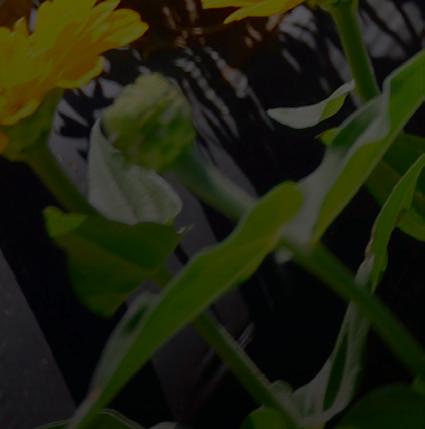
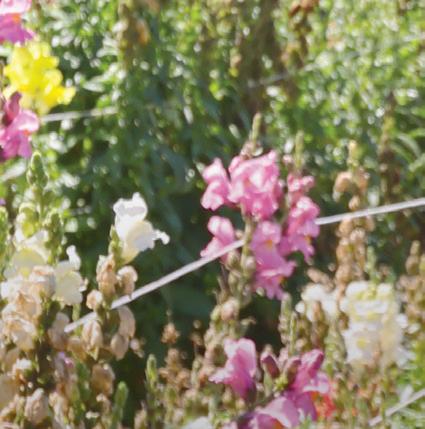
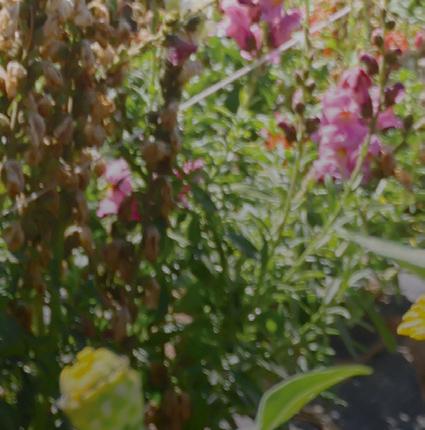
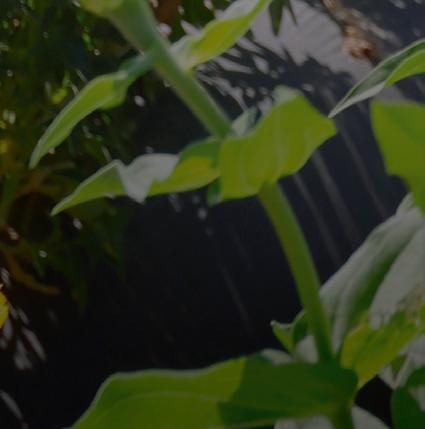

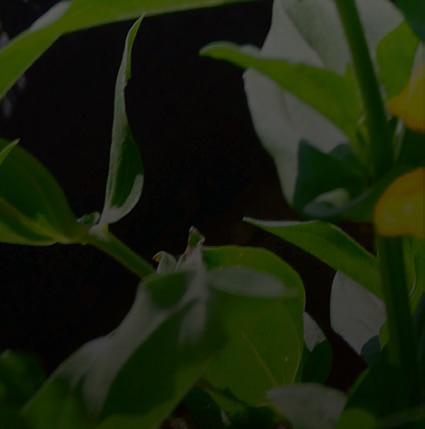
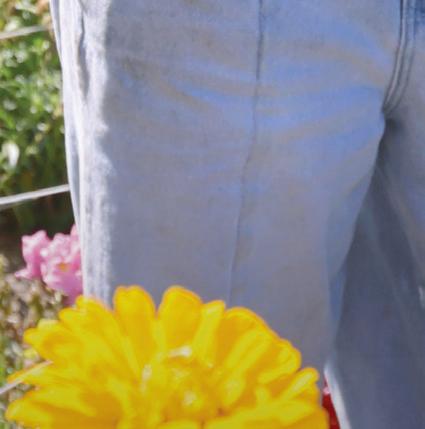


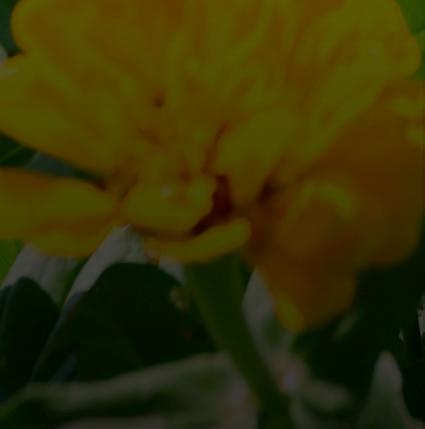
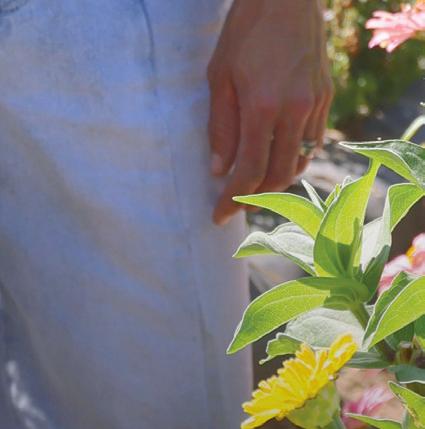
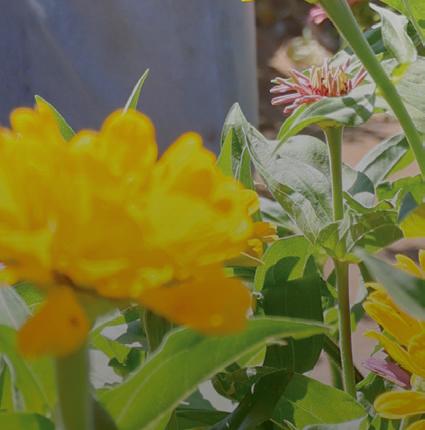
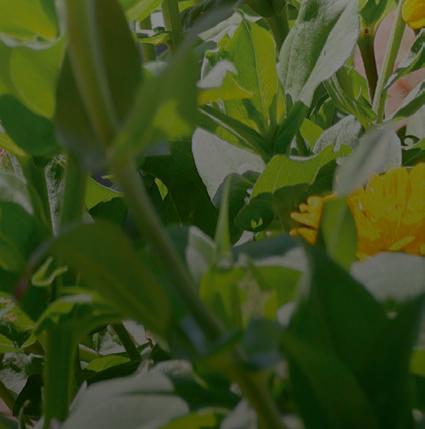
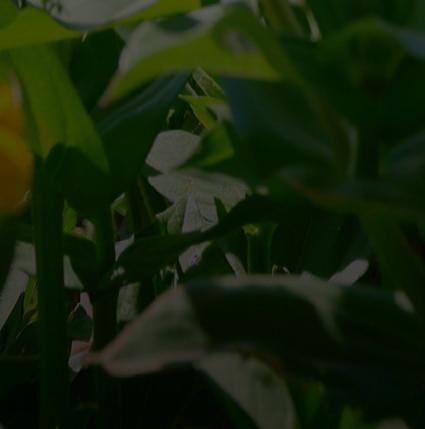
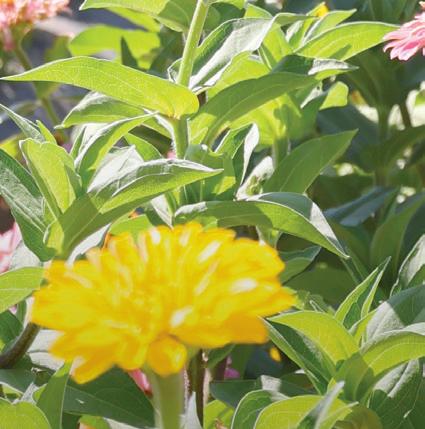

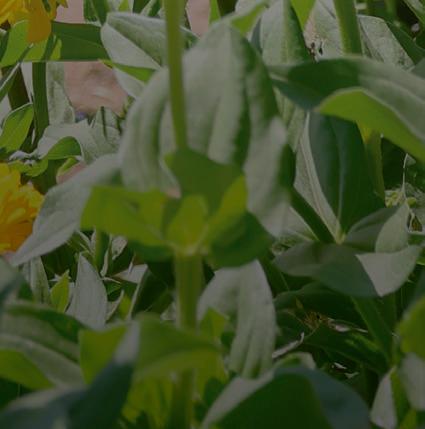


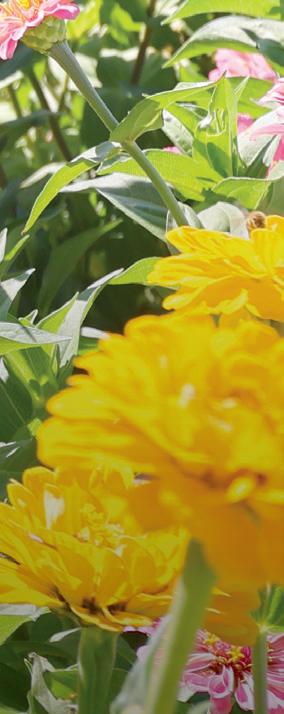






Blue Stakes of Utah 811 is issuing a safety reminder to Utah Residence.
“Call 811 Before You DIG” this not only applies to the professional contractor but to all homeowners.
Anyone who wants to put a shovel, or any other kind of digging equipment in the ground is required by law to Call 811 or contact bluestakes.org to
“Submit a Locate Request” to have the underground utility lines located and marked with paint and/or flags. This is for everyone’s safety. It’s a FREE service and remember, It’s the LAW!
Protecting the underground facilities that we all rely on every day is a shared responsibility.

Please do your part and remember to contact Blue Stakes at least three full business days before beginning your digging project. Check out our website for more information https://www.bluestakes.org
NOW EFFECTIVE – AMENDED CHANGES TO UTAH CODE 54-8a:
During the 2024 Utah Legislative Session, Senate Bill 145 amending Utah Code Title 54, Chapter 8a, Damage to Underground Utility Facilities Act was introduced, passed, and signed by the Governor to become law. For more information visit: https://www.bluestakes.org/law/



